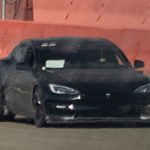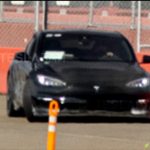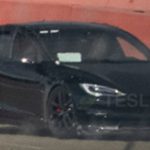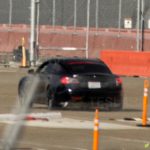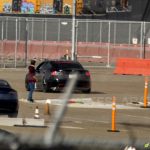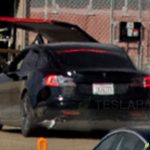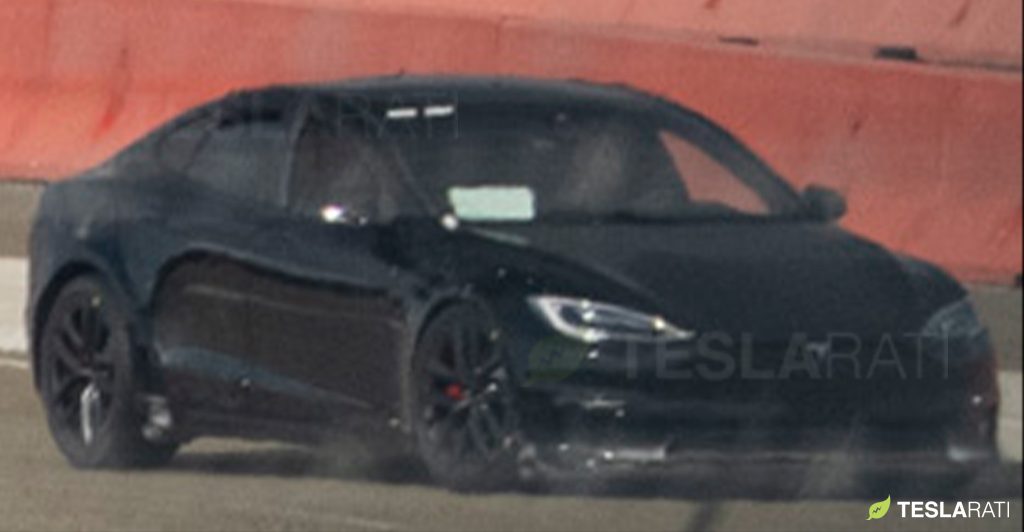
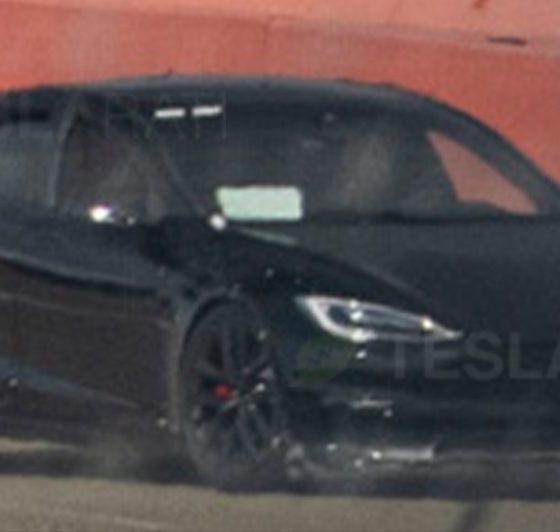
News
Tesla Model S “Refresh” spied track testing
New photos from the Tesla Fremont Factory obtained by Teslarati show the new Refreshed Tesla Model S and its new features, confirming the long-time speculation of whether the company’s flagship sedan would be updated nine years after its initial release. After the Plaid Model S was announced in 2019, slight cosmetic modifications were added to the car to increase aerodynamic performance in a track setting. Some of these new features included a wider body, a rear diffuser, and a spoiler. Tesla has made several changes to the Refreshed Model S, as seen in the photos below. The vehicle was spotted at both the Fremont Test Track and on public roads when the photographs were taken.
For those who are unfamiliar, Tesla operates its own test track behind the Fremont factory for its vehicles. In 2013, three years after Tesla’s purchase of the Fremont factory from GM, the electric automaker bought the 35-acre property that included the test track from the Union Pacific Railroad. It is located adjacent to the Fremont factory, so Tesla can take cars that need to be tested to the track within a few minutes. In the past, Tesla has tested vehicles like the Model Y and the 2020 Roadster at the track prior to their release, indicating that the new Model S that was spotted could be on its way to the company’s Design Studio shortly.
Initial rumors of the Model S refresh emerged in late 2020 after several updates to the Model 3 and Model Y vehicles. While the Model Y underwent several minor updates, like a new center console, new door paneling, and a heated steering wheel in China, the Model 3 was the subject of more noticeable cosmetic revisions. The mass-market sedan from Tesla was equipped with a full chrome delete kit that now comes standard, a new center console design, new headlights, double-paned glass, a powered trunk, and other interior revisions.
On the other hand, the Model S has only undergone one true cosmetic revision since its initial release nearly nine years ago: the removal of the nosecone. Since the vehicle has gone so many years without a real update or any major changes to its aesthetic qualities, Tesla may have decided it was time to “refresh” the car.
Now, photographs of the new Model S have been captured, showing a wider body, revised fog lights, new wheels, and several other cosmetic revisions.
A few of the more notable changes are a new front diffuser, a part that became standard with the newly-designed Plaid Model S. A diffuser displaces air underneath the vehicle’s body, increasing aerodynamic performance and making the flow of air more efficient during travel. Additionally, the front fascia has also been revised slightly. This is the second revision Tesla has made to this portion of the Model S since its release. The new design includes a larger central air intake vent for improved airflow and ventilation to the battery pack. This eliminates the possibility of overheating and improves battery lifetime and performance.
- The Model S in this photograph shows the revised front fascia, new fog light design, a wider body and new wheels. Photo: Teslarati
- A second photo shows a head-on view of the Model S spotted at Fremont. Photo: Teslarati
- Tesla has placed new wheels on the Model S in this photo, reminiscent of the Arachnid wheels that were included in the referral program. Photo: Teslarati
One of the more interesting and speculative details of the new Model S is that there is no touchscreen protruding from the top of the dash. The Model 3 and Model Y center dash screen can be seen from the outside of the vehicle when looking through the windshield. There is no evidence that Tesla is adopting the 3 and Y center touchscreen design for the Model S refresh. We are currently not aware of any modifications to the vertical touchscreen that has been standard on the Model S and Model X.
The fog lights located on the bottom of the front lip have also been modified, bringing a slightly new look to the lower lights. Additionally, new wheels appear to be on the Model S, and they look to be a revised version of the Arachnid wheels that Tesla included as a Referral Program reward back in 2016. Neither the 19″ Tempest Wheels nor the 21″ Sonic Carbon Twin Turbine Wheels that are available with the Plaid Model S matches the wheels that were equipped on the vehicle that was spotted at the Fremont Factory. This appears to confirm Tesla may also be releasing a new wheel design that will be included with the Refreshed Model S design.
It seems the refreshed Model S has adopted more features that are going to be included on the Plaid Model S, due to be released in late 2021. A wider fender design is paired with new, wider wheels. These modifications were first noticed on the Plaid Model S that was spotted running spirited laps at the Nürburgring in Germany in 2019.
Photo: Teslarati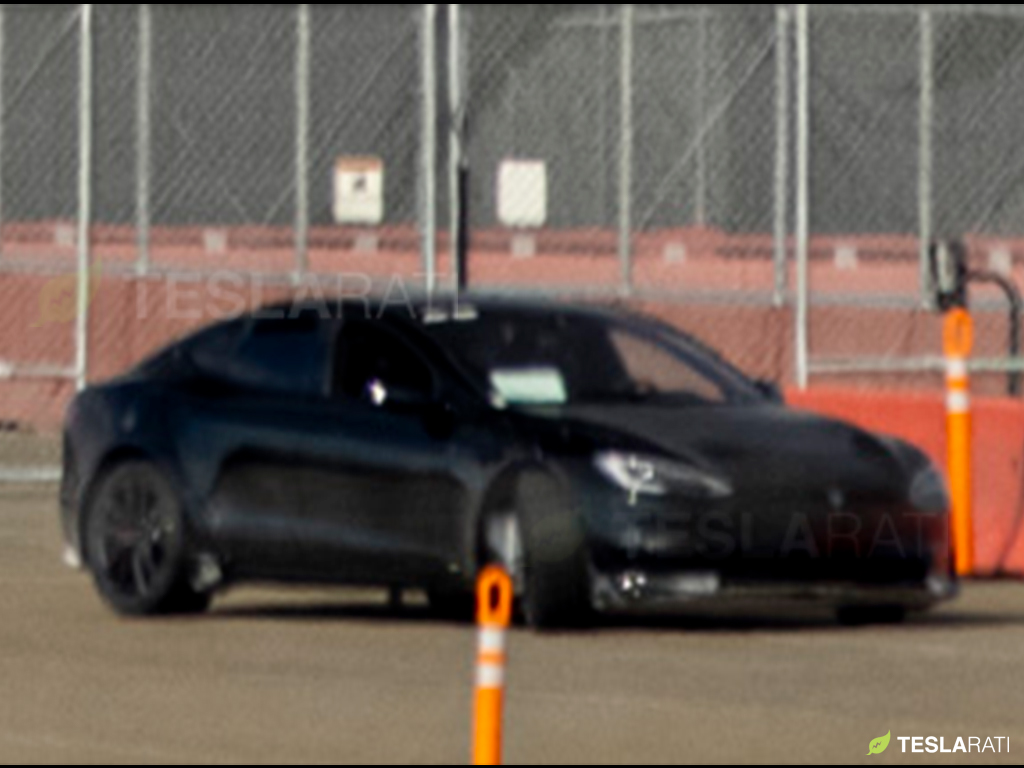
Another interesting note is the side repeater cameras have been adjusted onto the new fenders, but only slightly. It appears Tesla has moved it forward toward the wheel well. This could be to increase visibility when the cameras are activated.
The final noticeable external revision is a new rear bumper design that is more robust than the original Model S design. This could be indicative that the black Model S in the photos we shared could be the Plaid Model S, as it also has a wider rear bumper. However, it does not have a rear diffuser installed underneath, meaning it could just be a refreshed design.
- Photo: Teslarati
- Photo: Teslarati
- Photo: Teslarati
Tesla is holding its Q4 2020 Earnings Call on Wednesday and many enthusiasts believe the company will announce either a refresh to the Model S, or will indicate the Plaid Model S will be on its way soon. With the several external modifications that have been spotted thanks to the pictures above, we know that Tesla is working on a revised design for its flagship sedan. While no details are known about the interior as of yet, details will be shared as they are found.
The Kilowatts spotted some more photos of the unique Model S at Fremont, providing some additional perspective on what changes Tesla made to its flagship sedan.

News
Tesla Full Self-Driving gets sparkling review from South Korean politician
“Having already ridden in an unmanned robotaxi, the novelty wasn’t as strong for me, but it drives just as well as most people do. It already feels like a completed technology, which gives me a lot to think about.”
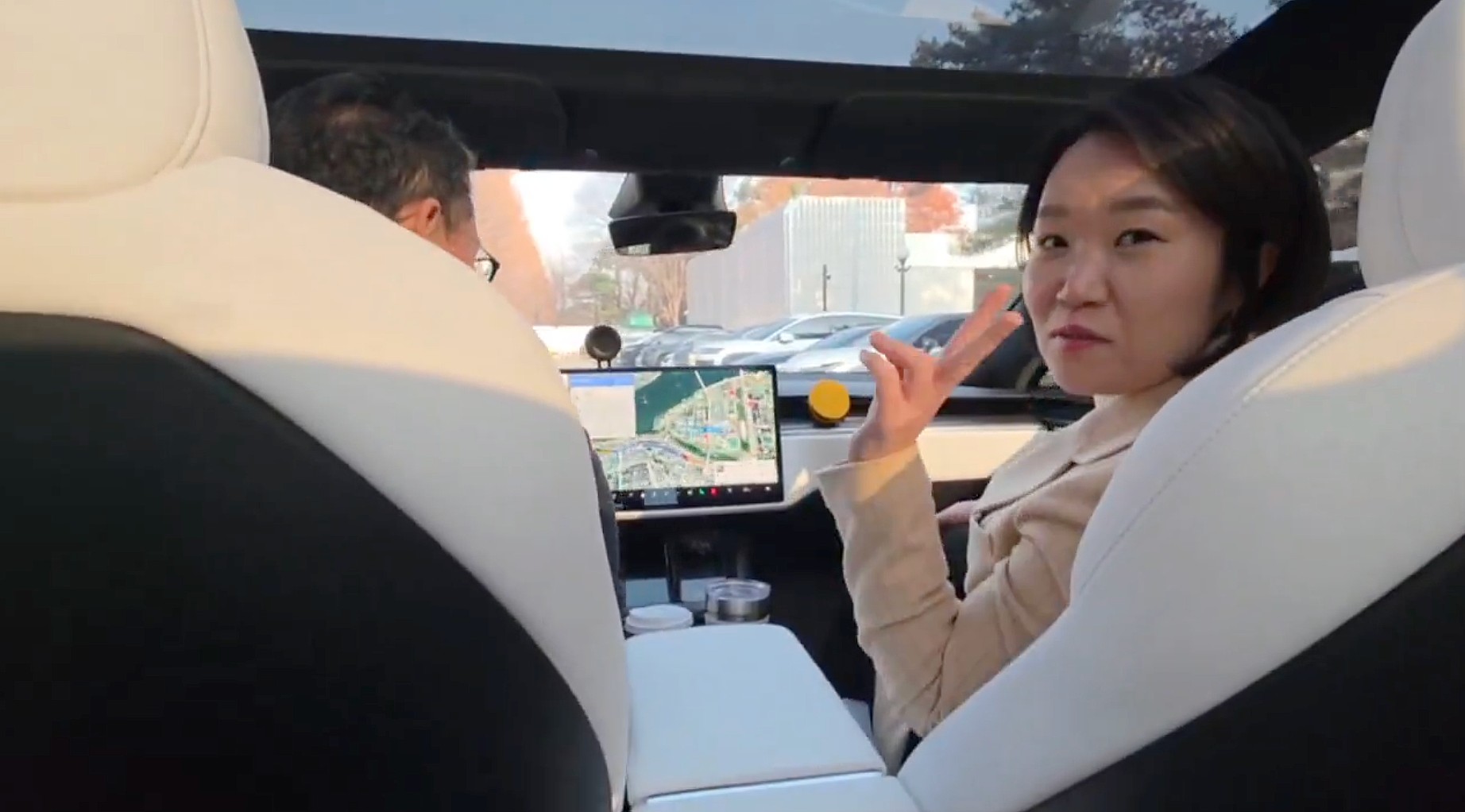
Tesla Full Self-Driving got its first sparkling review from South Korean politician Lee So-young, a member of the country’s National Assembly, earlier this week.
Lee is a member of the Strategy and Finance Committee in South Korea and is a proponent of sustainable technologies and their applications in both residential and commercial settings. For the first time, Lee was able to utilize Tesla’s Full Self-Driving technology as it launched in the country in late November.
Her thoughts on the suite were complimentary to the suite, stating that “it drives just as well as most people do,” and that “it already feels like a completed technology.”
드디어 오늘, 서울에서 테슬라 FSD 체험 했습니다.
JiDal Papa님의 모델S 협찬에 힘입어^^ 파파님 정말 감사합니다.
국회 -> 망원시장 -> 홍익대 -> 국회 복귀 코스였고요.
이미 무인 로보택시를 타봐서 그런지 신기함은
덜했지만, 웬만한 사람만큼 운전을 잘하네요.이미 완성된 기술이라고… pic.twitter.com/8pAidHBpRG
— 이소영 국회의원 (Soyoung Lee) (@im_soyounglee) December 17, 2025
Her translated post says:
“Finally, today I got to experience Tesla FSD in Seoul. Thanks to the Model S sponsored by JiDal Papa^^, I’m truly grateful to Papa. The route was from the National Assembly -> Mangwon Market -> Hongik University -> back to the National Assembly. Having already ridden in an unmanned robotaxi, the novelty wasn’t as strong for me, but it drives just as well as most people do. It already feels like a completed technology, which gives me a lot to think about. Once it actually spreads into widespread use, I feel like our daily lives are going to change a lot. Even I, with my license gathering dust in a drawer, don’t see much reason to learn to drive a manual anymore.”
Tesla Full Self-Driving officially landed in South Korea in late November, with the initial launch being one of Tesla’s most recent, v14.1.4.
It marked the seventh country in which Tesla was able to enable the driver assistance suite, following the United States, Puerto Rico, Canada, China, Mexico, Australia, and New Zealand.
It is important to see politicians and figures in power try new technologies, especially ones that are widely popular in other regions of the world and could potentially revolutionize how people travel globally.
News
Tesla dispels reports of ‘sales suspension’ in California
“This was a “consumer protection” order about the use of the term “Autopilot” in a case where not one single customer came forward to say there’s a problem.
Sales in California will continue uninterrupted.”

Tesla has dispelled reports that it is facing a thirty-day sales suspension in California after the state’s Department of Motor Vehicles (DMV) issued a penalty to the company after a judge ruled it “misled consumers about its driver-assistance technology.”
On Tuesday, Bloomberg reported that the California DMV was planning to adopt the penalty but decided to put it on ice for ninety days, giving Tesla an opportunity to “come into compliance.”
Tesla enters interesting situation with Full Self-Driving in California
Tesla responded to the report on Tuesday evening, after it came out, stating that this was a “consumer protection” order that was brought up over its use of the term “Autopilot.”
The company said “not one single customer came forward to say there’s a problem,” yet a judge and the DMV determined it was, so they want to apply the penalty if Tesla doesn’t oblige.
However, Tesla said that its sales operations in California “will continue uninterrupted.”
It confirmed this in an X post on Tuesday night:
This was a “consumer protection” order about the use of the term “Autopilot” in a case where not one single customer came forward to say there’s a problem.
Sales in California will continue uninterrupted.
— Tesla North America (@tesla_na) December 17, 2025
The report and the decision by the DMV and Judge involved sparked outrage from the Tesla community, who stated that it should do its best to get out of California.
One X post said California “didn’t deserve” what Tesla had done for it in terms of employment, engineering, and innovation.
Tesla has used Autopilot and Full Self-Driving for years, but it did add the term “(Supervised)” to the end of the FSD suite earlier this year, potentially aiming to protect itself from instances like this one.
This is the first primary dispute over the terminology of Full Self-Driving, but it has undergone some scrutiny at the federal level, as some government officials have claimed the suite has “deceptive” naming. Previous Transportation Secretary Pete Buttigieg was vocally critical of the use of the name “Full Self-Driving,” as well as “Autopilot.”
News
New EV tax credit rule could impact many EV buyers
We confirmed with a Tesla Sales Advisor that any current orders that have the $7,500 tax credit applied to them must be completed by December 31, meaning delivery must take place by that date. However, it is unclear at this point whether someone could still claim the credit when filing their tax returns for 2025 as long as the order reflects an order date before September 30.
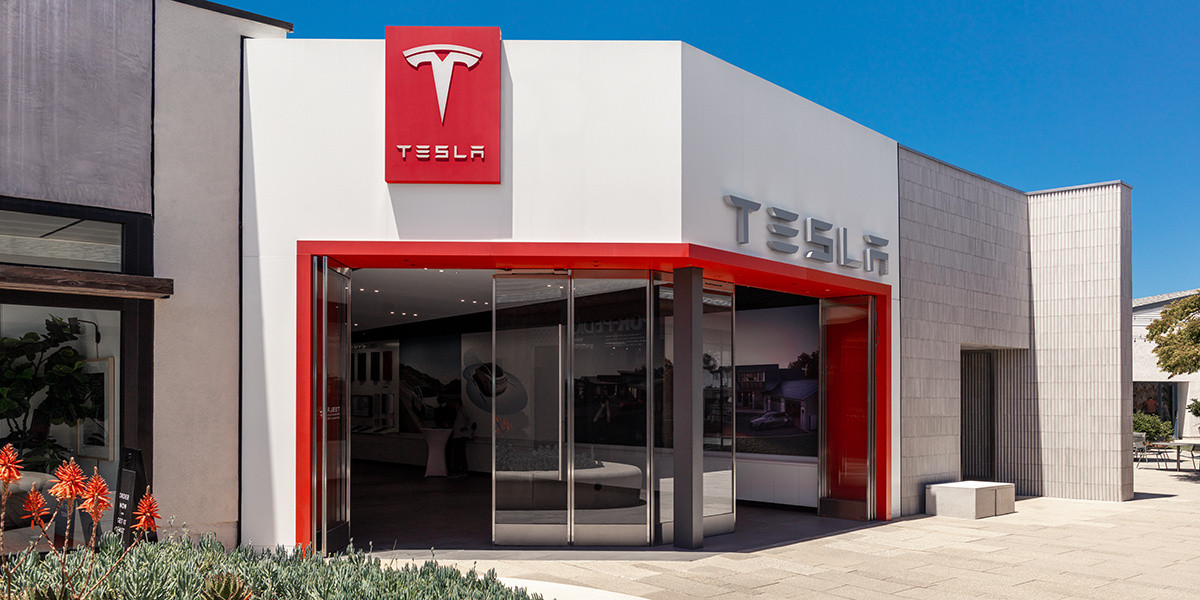
Tesla owners could be impacted by a new EV tax credit rule, which seems to be a new hoop to jump through for those who benefited from the “extension,” which allowed orderers to take delivery after the loss of the $7,500 discount.
After the Trump Administration initiated the phase-out of the $7,500 EV tax credit, many were happy to see the rules had been changed slightly, as deliveries could occur after the September 30 cutoff as long as orders were placed before the end of that month.
However, there appears to be a new threshold that EV buyers will have to go through, and it will impact their ability to get the credit, at least at the Point of Sale, for now.
Delivery must be completed by the end of the year, and buyers must take possession of the car by December 31, 2025, or they will lose the tax credit. The U.S. government will be closing the tax credit portal, which allows people to claim the credit at the Point of Sale.
🚨UPDATE: $7,500 Tax Credit Portal “Closes By End of Year”.
This is bad news for pending Tesla buyers (MYP) looking to lock in the $7,500 Tax Credit.
“it looks like the portal closes by end of the year so there be no way for us to guarantee the funds however, we will try our… pic.twitter.com/LnWiaXL30k
— DennisCW | wen my L (@DennisCW_) December 15, 2025
We confirmed with a Tesla Sales Advisor that any current orders that have the $7,500 tax credit applied to them must be completed by December 31, meaning delivery must take place by that date.
However, it is unclear at this point whether someone could still claim the credit when filing their tax returns for 2025 as long as the order reflects an order date before September 30.
If not, the order can still go through, but the buyer will not be able to claim the tax credit, meaning they will pay full price for the vehicle.
This puts some buyers in a strange limbo, especially if they placed an order for the Model Y Performance. Some deliveries have already taken place, and some are scheduled before the end of the month, but many others are not expecting deliveries until January.
